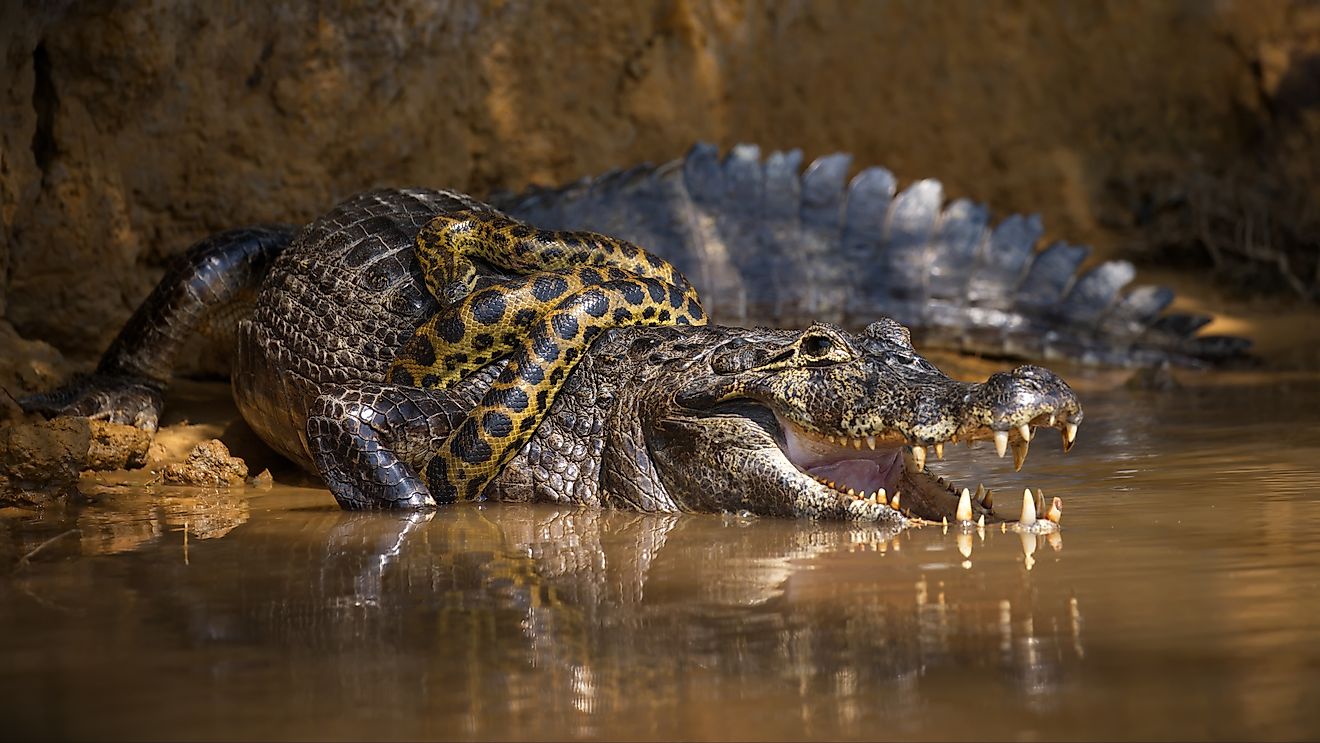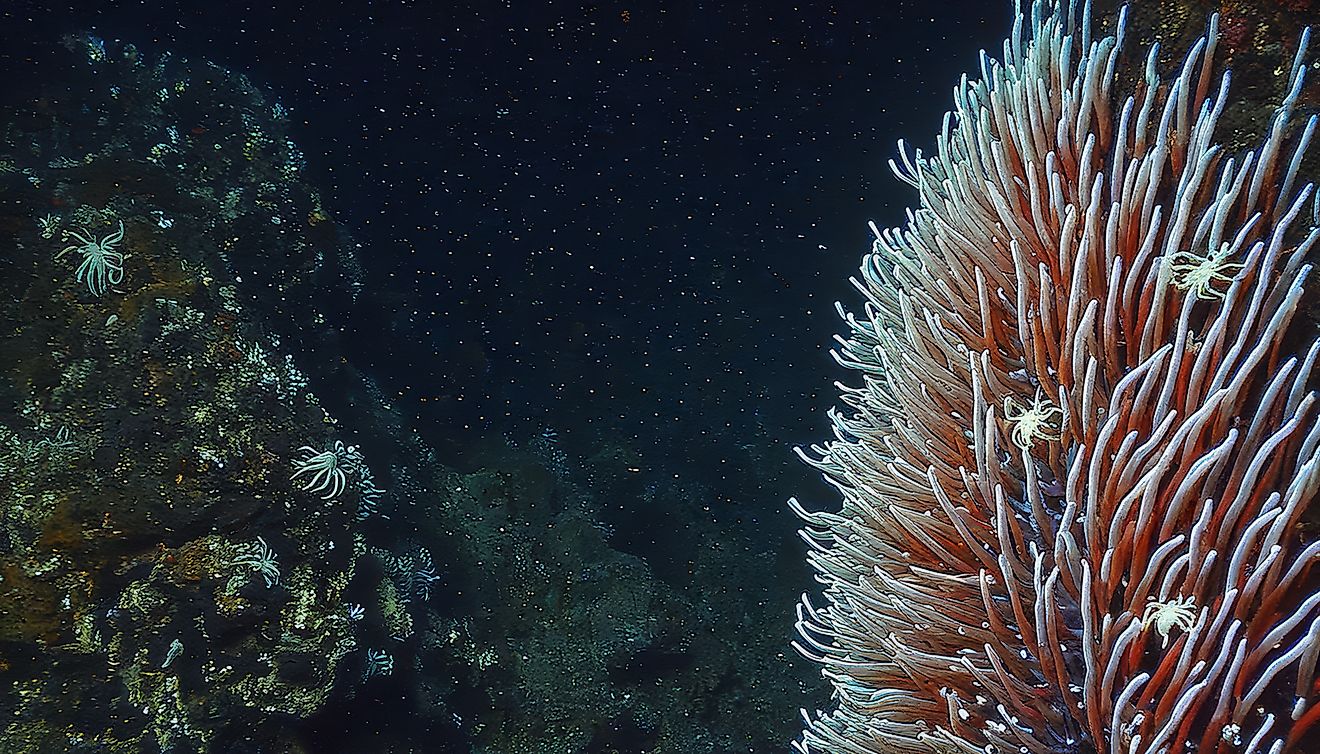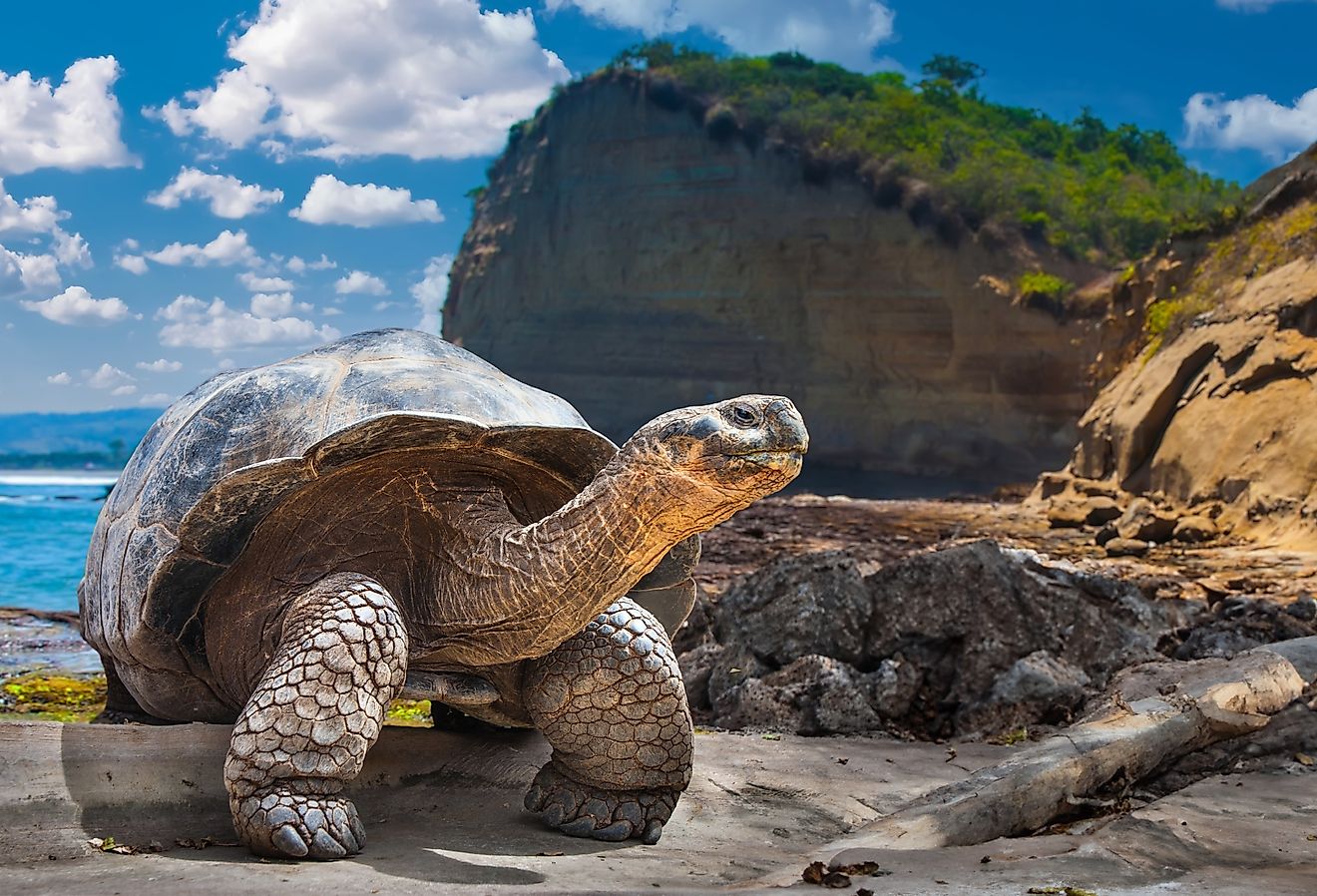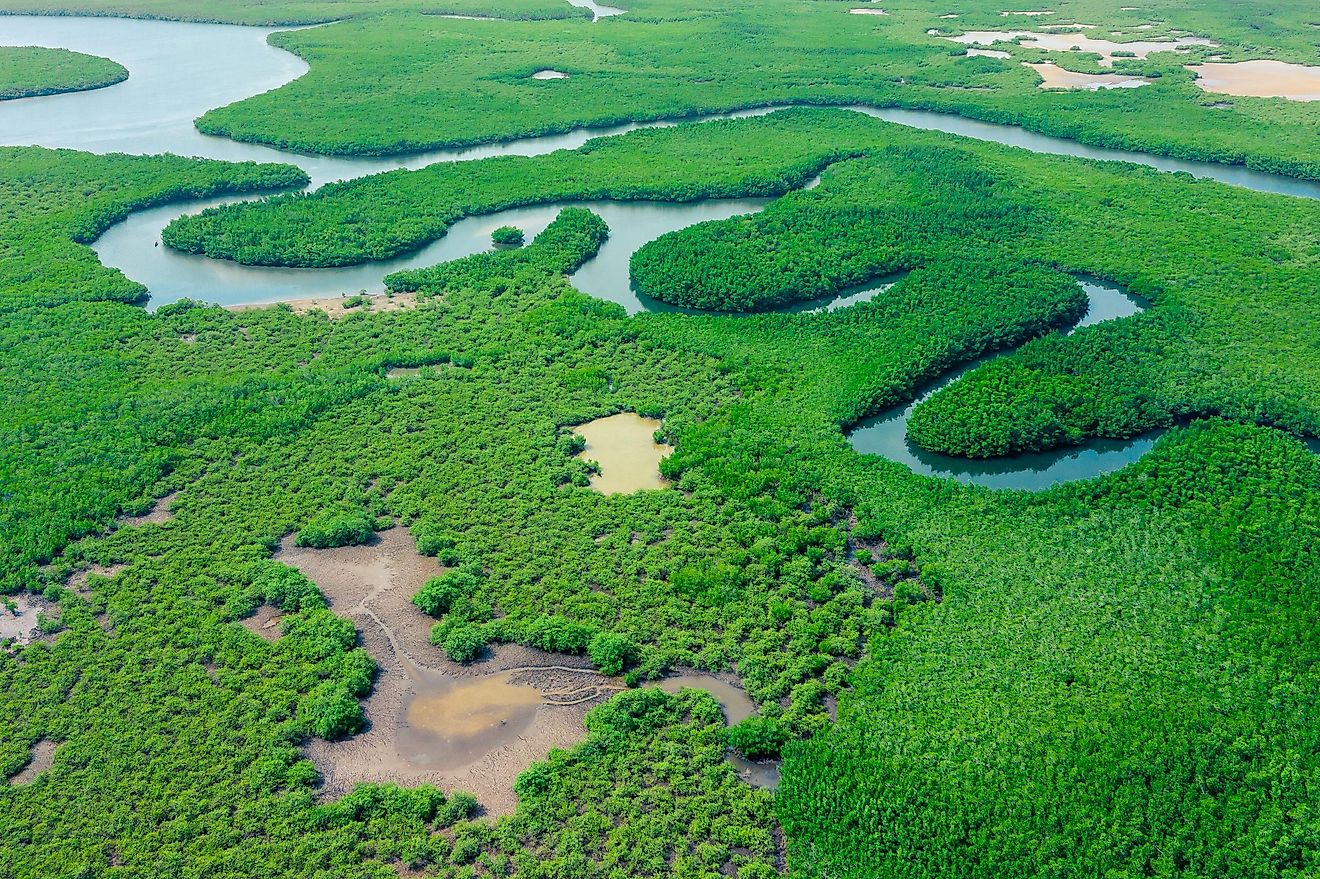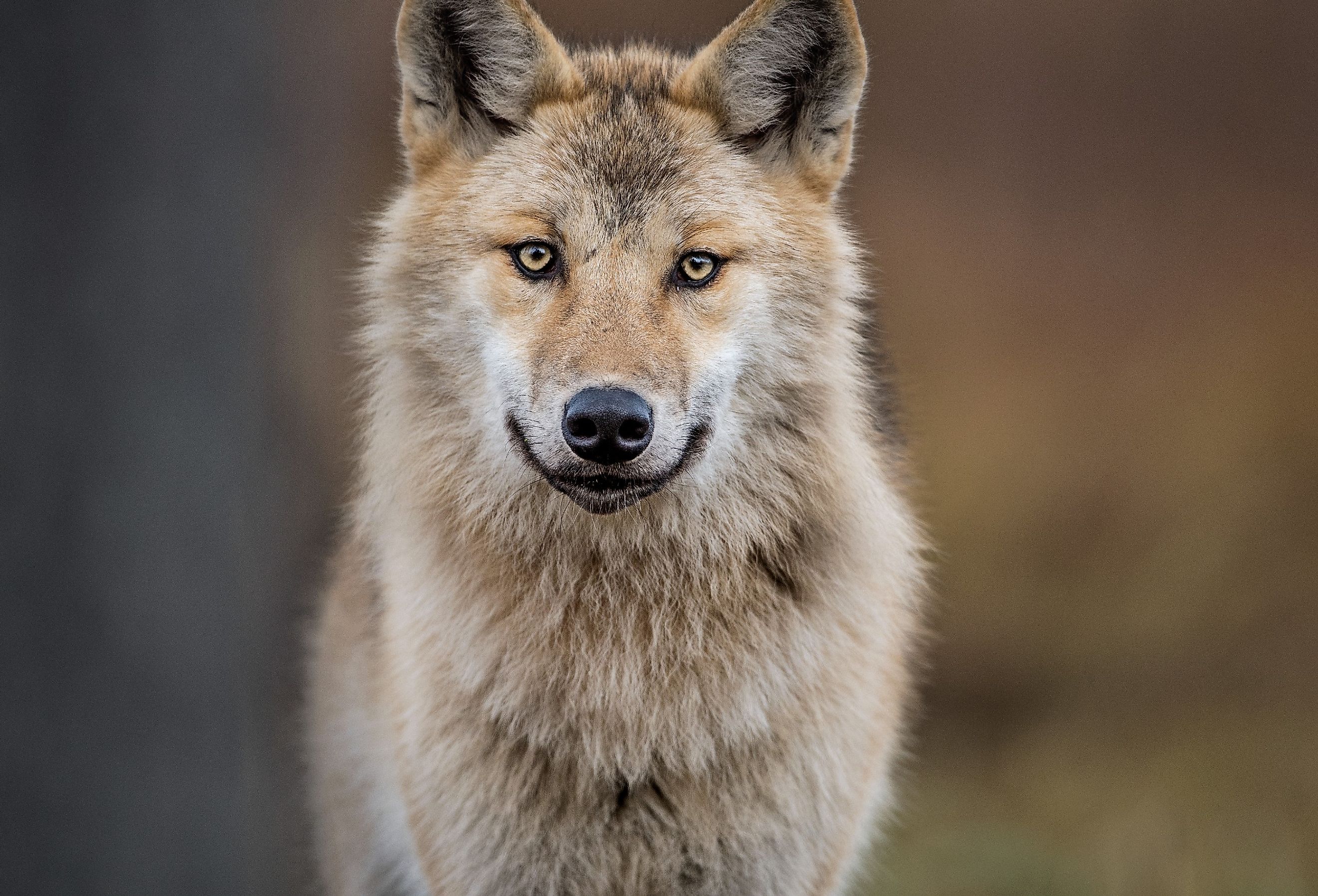
Animals Native to Georgia
The country of Georgia, occupying parts of Eastern Europe as well as parts of Western Asia, is one of the most mountainous countries in Europe. The biodiversity of Georgia, as it lies mostly within the Caucasus Mountains and borders the Black Sea, with Russia to the north and Turkey to the south, accounts for a variety of animals as well. According to the Georgia Biodiversity Database, there are 54 species of reptiles, over 400 species of birds, 12 amphibian species, and over 100 species of mammals currently living there. These are some of the animals native to Georgia.
Eurasian Lynx
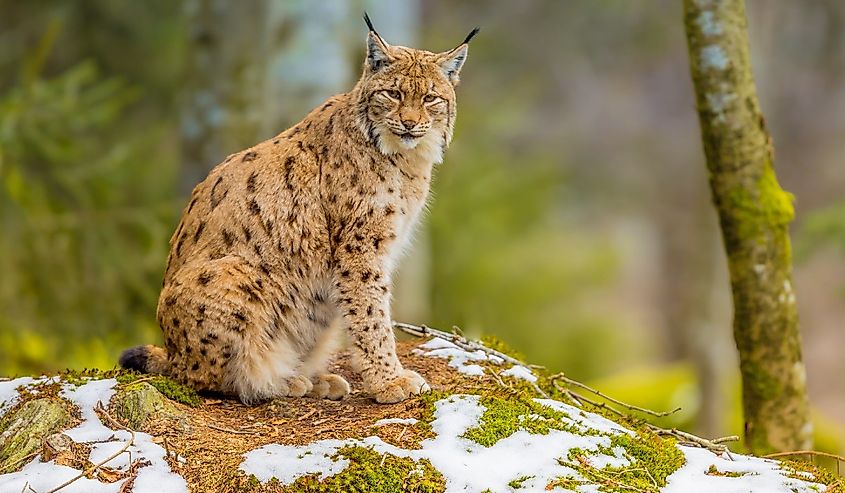
The largest in the Lynx family, the Eurasian Lynx (Lynx lynx) ranges from Central Europe to Central Asia, making the mountainous region of Georgia a perfect habitat. Known for concealing itself and stalking down its prey, the Eurasian Lynx prefers areas with plenty of hiding spots to conceal its trademark reddish-brown, spotted coat. While the Lynx can move through any terrain, it prefers, while high up in the mountains, to follow its prey away from the deeper snow to where it can more easily traverse. Though it was hunted for its pelt almost to extinction in the 1970s and 1980s, the Eurasian Lynx is now listed as least concerned by the IUCN Red List of Threatened Species.
Brown Bear
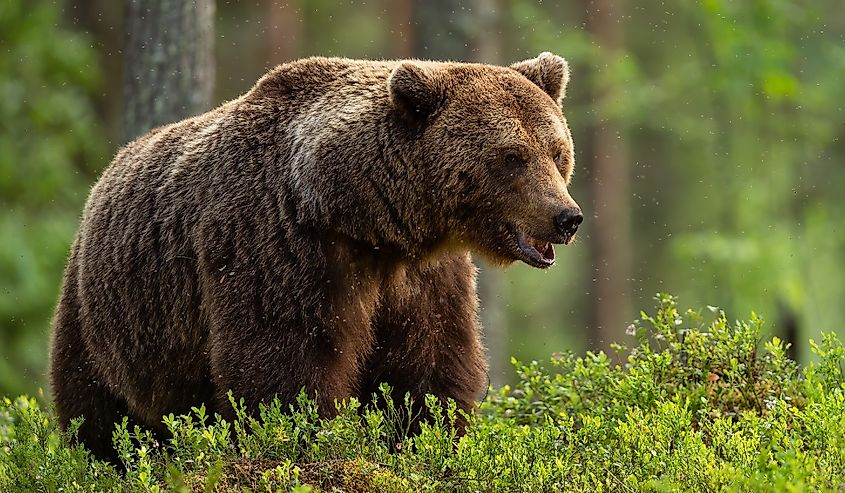
The Brown Bear (Ursus arctos) is native to the country of Georgia, as well as most of Europe, some parts of Western Asia, and even a large portion of northwestern North America. As the Eurasian Brown Bear, commonly known as the Grizzly Bear in North America, lives in such a large geographical region, the IUCN Red List of Threatened Species considers them to be listed under least concern. Coincidentally, the Eurasian Brown Bear, those native to the country of Georgia and Europe, are nicknamed the European Bear and the Common Brown Bear due to the plethora of Brown Bears, approximately 200,000 in existence today, most of them living in parts of Eurasia and Russia.
West Caucasian Tur
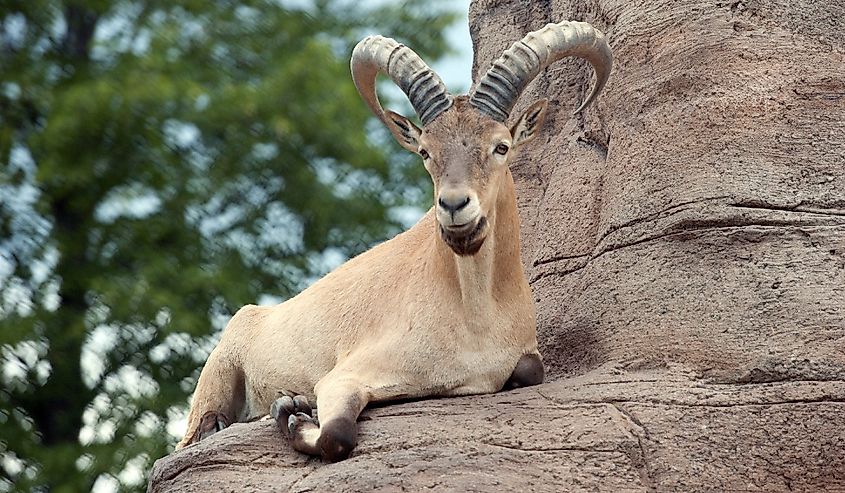
The West Caucasian Tur (Capra caucasica), known also as the Western Tur, native to the country of Georgia and the Caucasus Mountains, is endangered (EN) on the IUCN Red List of Threatened Species. This is mostly due to habitat loss. There are only about 2,500 mature Western Tur in existence, which zoos are working hard to increase through breeding and careful reintroduction into the wild. The Western Tur and the Eastern Tur (some believe they are similar enough to be the same animal) prefer a mountainous habitat rich in grasses, leaves, and shrubs, which fits the Caucasus Mountains at elevations between 2,500 and 13,000 ft. While the West Caucasian Tur is endangered (EN), the East Caucasian Tur falls under the near threatened (NT) category.
European Mink
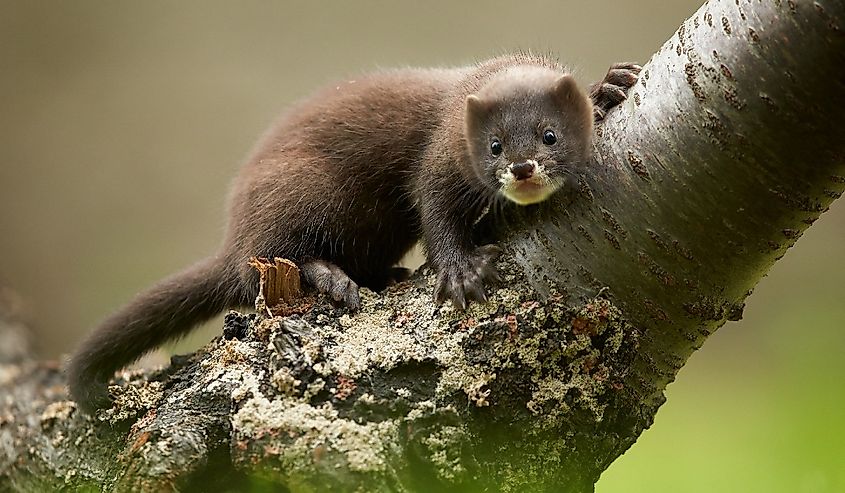
Hunted and killed for its luxuriant fur, the European Mink (Mustela lutreola) is critically endangered (CE) in the country of Georgia, as well as across most of Europe. Opting for a habitat consisting of forests, wetlands, rivers, and lakes, this semiaquatic carnivore survives on rabbits and birds, but predominantly likes fish, frogs, and other aquatic creatures. The European Mink, also named the Eurasian or Russian Mink, are solitary creatures, except during the spring, during mating season. Being semiaquatic, they are natural, strong swimmers and find prey close to the water’s edge at night, as they are nocturnal, for the most part, and rely on the dark to hunt for food.
Mehely’s Horseshoe Bat
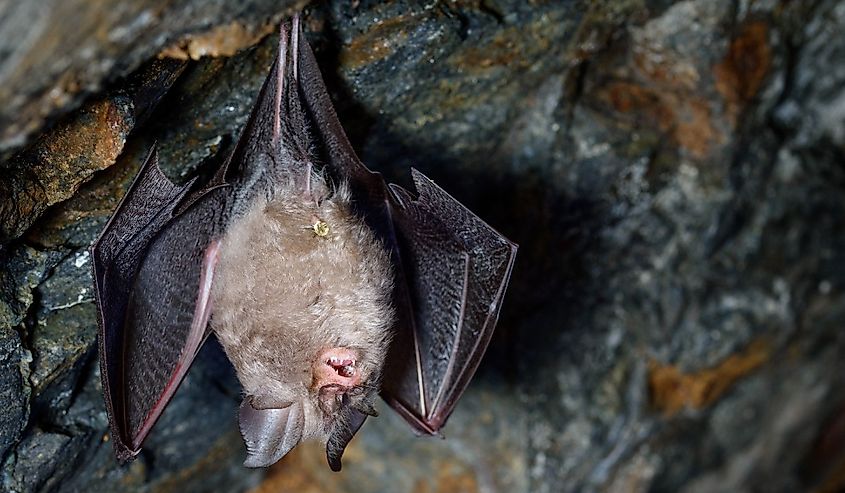
The Mehely’s Horseshoe Bat (Rhinolophus mehelyi), common throughout Southern Europe and parts of the Middle East, is native to Georgia, as well as a slew of other countries including Russia and Turkey. This species of insectivorous bat prefers to roost in caves with high levels of limestone that are near water. Though known in over 30 different countries, this species of horseshoe bat is still listed as vulnerable (VU) on the IUCN Red List of Threatened Species. Like its cousin, the Lesser Horseshoe Bat, it prefers warm caves but will choose any place that offers warmth and darkness to roost. Akin to other species of bats, Horseshoe Bats utilize echolocation to see their surroundings and find prey.
Common Hamster
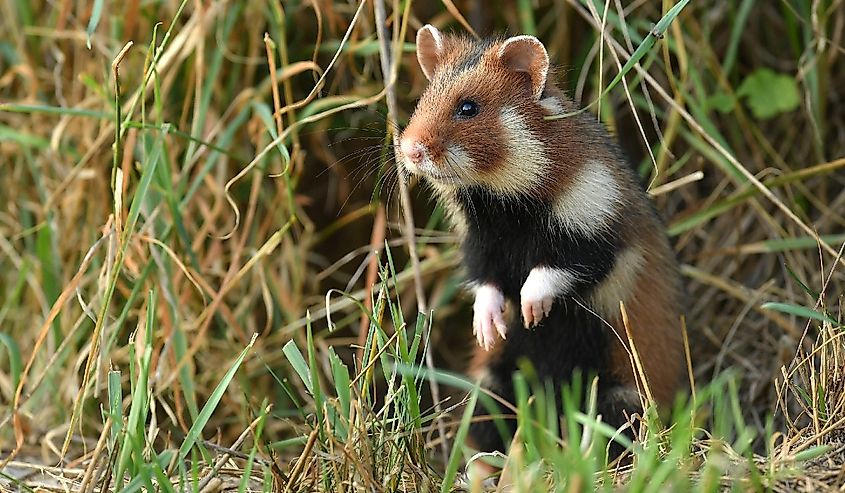
The Common Hamster, sometimes named the European Hamster (Cricetus cricetus) has a false name, as they are critically endangered (CE) on the IUCN Red List of Threatened Species. Preferring a grassland habitat, the European Hamster live throughout Europe and Asia, as long as there are wide open fields for it to search out its food which, like most hamsters, consists of seeds, grass, legumes, and bugs. Unlike the Syrian Hamster, this nocturnal herbivore falls under the order of Cricetus rather than Rodentia. Some interesting facts differentiating the European Hamster from its Syrian cousin, is that European Hamsters are much larger in size and that they cannot be tamed, whereas a Syrian Hamster can.
Persian Leopard
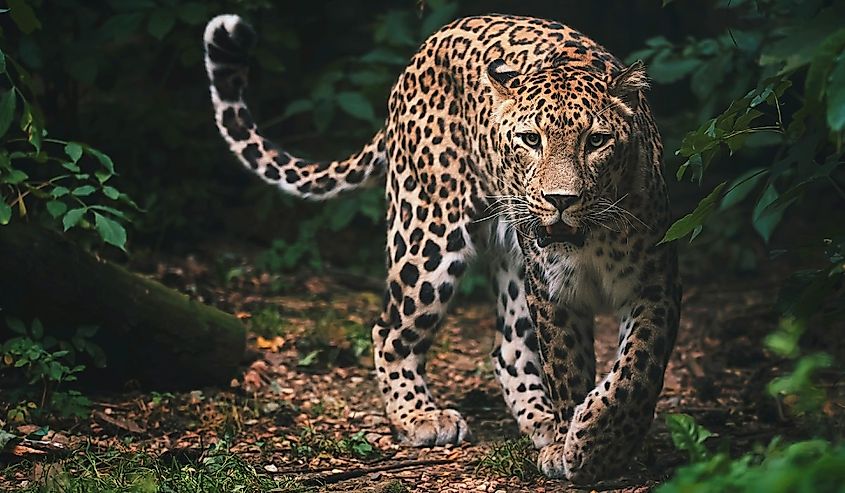
The Persian Leopard (Panthera pardus tulliana) is on the verge of extinction in Europe and Asia and, according to the IUCN Red List of Threatened Species, this largest of the leopard subspecies is currently listed under the category of endangered (EN). While the Leopard (Panthera Pardus) is vulnerable (VU), the Persian Leopard faces even more of a threat, due to the rarity of its fur and its status of less than 1,000 in existence worldwide. The Persian Leopard possesses luxurious golden fur, with black rosettes and spots, and has a habitat that ranges as far east as the Caucasus Mountains and as far west as Afghanistan and Pakistan.
Gray Wolf
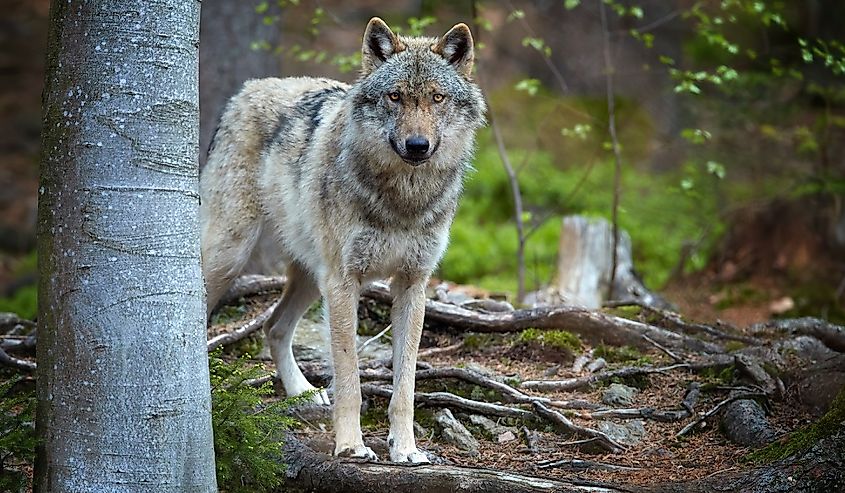
The Eurasian Gray Wolf (Canis lupus), known also as the Timber Wolf, is the largest wild member of the dog family and is quite common throughout most of the Northern Hemisphere, ranging in parts of North America, Europe, and Asia. Though the species almost died out in several areas due to inbreeding, the Eurasian Gray Wolf is listed as least concern (LC) through the IUCN Red List of Threatened Species. Opting for larger prey, like deer, moose, elk, and bison, the Gray Wolf will also settle for smaller food like sheep, birds, and fish if necessary. Unlike most other predators in Georgia and the Caucasus Mountains, the Gray Wolf runs in packs, sometimes as large as a dozen in number.
Indian Crested Porcupine
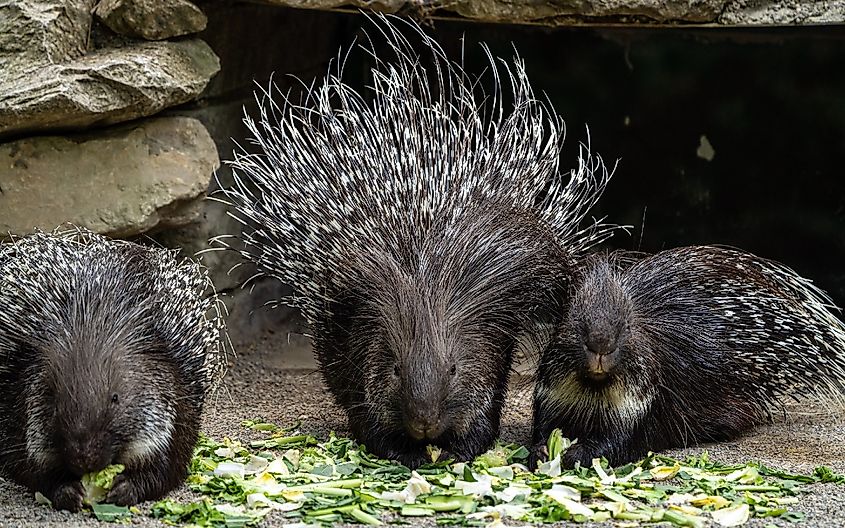
The Indian Crested Porcupine (Hystrix indica) is native to the southern part of the country of Georgia, as well as throughout Europe and Asia, opting for scrublands, forests, and grasslands, though it can adapt to a multitude of climates. Protected by two different layers of quills, the Indian Crested Porcupine will even rattle the quills on its tail when threatened. Listed under least concern (LC) on the IUCN Red List of Threatened Species, there are enough of these prickly creatures to go around, much to the chagrin of predators like leopards, hyenas, and wolves. Food for the Indian Crested Porcupine, a member of the rodent family, consists of fruits, grains, and roots, though they do gnaw on bones to assist the growth of their quills.
Goitered Gazelle
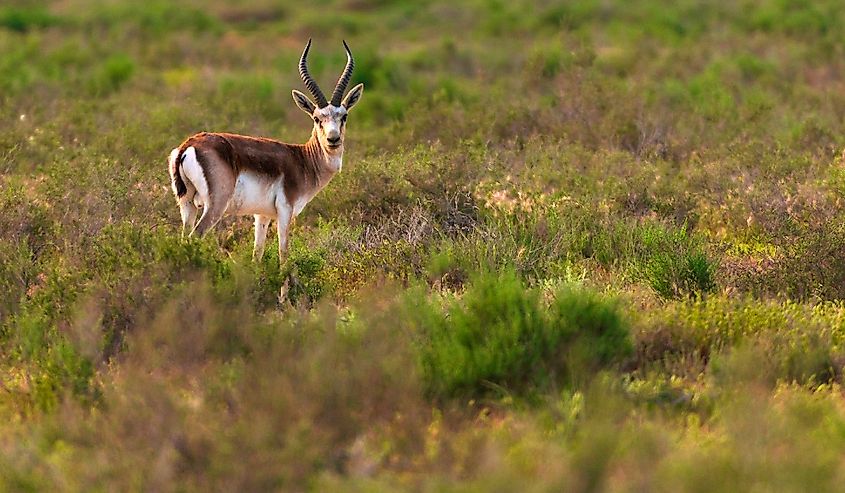
Native to Georgia, with the males sporting long horns and enlarged "goiter-like" throats, Goitered Gazelles (Gazella subgutturosa) tend to be social creatures, maintaining families of less than ten in the summertime and quite a few more for protection in the winter. Though they choose to live in several areas, like mountains, grassland, and shrubland, opting for climates that are tropical, arid, or temperate, the Goitered Gazelle is vulnerable (VU) on the IUCN Red List of Threatened Species. Also named the Black-Tail Gazelle, they have a plethora of enemies, including wolves, hyenas, and mankind. Illegal hunting and loss of habitat are two of the predominant reasons for the decline of the Gazelle, especially the Goitered Gazelle.
Conclusion
When pondering the beauty of Georgia, the country between Europe and Asia, consider the animals living and surviving within its borders. From the plethora of Eurasian Lynx and the Indian Crested porcupines to the small number of Persian Leopards and Goitered Gazelle, there is an extravagant biodiversity in Georgia and around the Caucasus Mountains. It may even tempt you to experience this wonder of nature for yourself.

